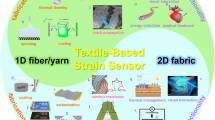Abstract
In this paper, we describe the possible use of hermal contact resistance measured under ambient conditions as a non-destructive feature to monitor L-shape bolted joints. We demonstrate that thermal contact resistance can be correlated to the contact pressure of L-shape bolted joints and thus can be used to infer joint tightness. Five different torque levels of bolt tightness in an L-shape bolted joint were measured for contact pressure and thermal contact resistance using Fuji Prescale® pressure-sensitive film and a test setup in ambient conditions. Using probabilistic analysis, probability density functions (PDFs) and intervals developed from the PDFs, the contact pressure and thermal contact resistance were developed and correlated. By examining the intervals of the contact pressure and thermal contact resistance at each torque level, it was concluded that thermal contact resistance measured under ambient conditions can be used to describe bolted joint tightness.











Similar content being viewed by others
References
Chang FK, Markmiller JFC (2006) A new look in design of intelligent structures with SHM. Proc of 3rd European Workshop: Structural Health Monitoring (Granada)
Farrar CR, Cornwell PJ, Doebling SW, Prime MB (2000) Structural health monitoring studies of the Alamosa Canyon and I-40 Bridges. Los Alamos National Laboratory, USA
Altunok E, Reda Taha MM, Ross TJ (2007) Possibilistic approach for damage detection in structural health monitoring. J of Structural Eng 133:1247–1256
Fernlund I (1961) A method to calculate the pressure between bolted or riveted plates. Trans of Chalmers U of Tech (Gothenburg, Sweden) No. 245
Gould HH and Mikic BB (1972) Areas of contact and pressure distribution in bolted joints. Trans. of ASME 864–870
Ito Y, Toyoda J, Nagata S (1979) Interface pressure distribution in a bolted-flange assembly. J Mech Des 101:330–337
Li KT, Shi G, Bellinger NC (2010) Effects of fastener clearance fit and friction coefficient on the stress condition in triple-row riveted lap joints. Proc of 51st AIAA/ASME/ASCE/AHS/ASC 2010 (Orlando)
Pau M, Baldi A (2007) Application of an ultrasonic technique to assess contact performance of bolted joints. J of Pressure Vessel Tech 129:175–185
Todd MD, Erickson K, Leed K, Nicholse JM (2004) Using chaotic interrogation and attractor nonlinear cross-prediction error to detect fastener preload loss in an aluminum frame. Am Institute of Phy 14:387–399
Aymerich F, Pau M (2004) Assessment of nominal contact area parameters by means of ultrasonic waves. J of Tribology 126:639–645
Hale JE, Brown TD (1992) Contact stress gradient detection limits of presenssor film. Trans of ASME 114:352–357
Liggins AB, Hardie WR, Finlay JB (1995) The spatial and pressure resolution of Fuji pressure sensitive film. Exper Mech 35:166–173
Jalalpour M, Austin EM, Reda Taha MM (2010) Correlating shear slip, contact pressure and ultrasonic features in health monitoring of bolted joints in aerospace structures. Proc of the ASME 2010 Conf on Smart Mater, Adaptive Struct & Intelligent Sys (Philadelphia)
Yigit F, Hector LG Jr (2000) Critical wavelengths for gap nucleation in solidification. Part 1: Theoretical methodology. ASME J Appl Mech 67:66–76
Howarth JA, Hector LG Jr (2001) A thermomechanical model of solidification on a moving mold with constant velocity. J Thermal Stresses 24(10):937–985
Yigit F, Hector LG Jr (2002) Solidification of a pure metal with finite thermal capacitance on a sinusoidal mold surface. J Thermal Stresses 25:7663–7690
Snaith B, Ocallaghan PW, Probert SD (1982) Minimizing the thermal resistance of pressed contacts. J Mech Eng Sci 24:183–189
Snaith B, Ocallaghan PW, Probert SD (1984) Interstitial materials for controlling thermal conductances across pressed metallic contacts. App Energy 16:175–191
Snaith B, Probert SD, Ocallaghan PW (1986) Thermal resistances of pressed contacts. App Energy 22:31–84
Mantelli MBH, Yovanovich MM (1998) Parametric heat transfer study of bolted joints. J of Thermophysics and Heat Trans 12:382–390
Yeh CL, Wen CY, Chen Y, Yeh SH, Wu CH (2001) An experimental investigation of thermal contact conductance across bolted joints. Exper Thermal and Fluid Sci 25:349–357
Didschuns I, Woodcraft AL, Bintley D, Hargrave PC (2004) Thermal conductance measurements of bolted copper to copper joints at sub-Kelvin temperatures. Cryogenics 44:293–299
Argatov I, Sevostianov I (2010) Health monitoring of bolted joints via electrical conductivity measurements. Int J Eng Sci 48:874–887
Committee F (2011) SAE J429 Mechanical and material requirements for externally threaded fasteners, SAE Handbook, vol 1. Soc of Automotive Eng, Warrendale, USA
Nowak AS, Collins K (2000) Reliability of structures. McGraw Hill, USA
Ang AH-S, Tang WH (1975) Probability concepts in engineering planning and design, Vol 1. Basic principles. Wiley, USA
Gumbel EJ (1954) Statistical theory of extreme values and some practical applications. Applied mathematics series publication No. 33. National Bureau of Standards, Washington, DC
Özisik MN, Orlande H, Hector LG Jr, Anyalebechi PN (1992) Inverse problem of estimating interface conductance during solidification via conjugate gradient method. J Mat Process Manufacturing Sci 2:213–225
Acknowledgments
Authors gratefully acknowledge the financial support by Air Force Office of Scientific Research (AFOSR) to University of New Mexico and CSA Engineering. Technical help by CSA Engineering in calibration test is greatly appreciated. The financial support by the National Research Foundation of Korea (NRF) grant funded by the Korea government (MEST) (No. 2011–0030842) for the second author is greatly appreciated. Special thanks go to Dr. Eric Austin for his technical advice during this study.
Author information
Authors and Affiliations
Corresponding author
Rights and permissions
About this article
Cite this article
Jalalpour, M., Kim, J.J. & Reda Taha, M.M. Monitoring of L-Shape Bolted Joint Tightness Using Thermal Contact Resistance. Exp Mech 53, 1531–1543 (2013). https://doi.org/10.1007/s11340-013-9759-9
Received:
Accepted:
Published:
Issue Date:
DOI: https://doi.org/10.1007/s11340-013-9759-9




